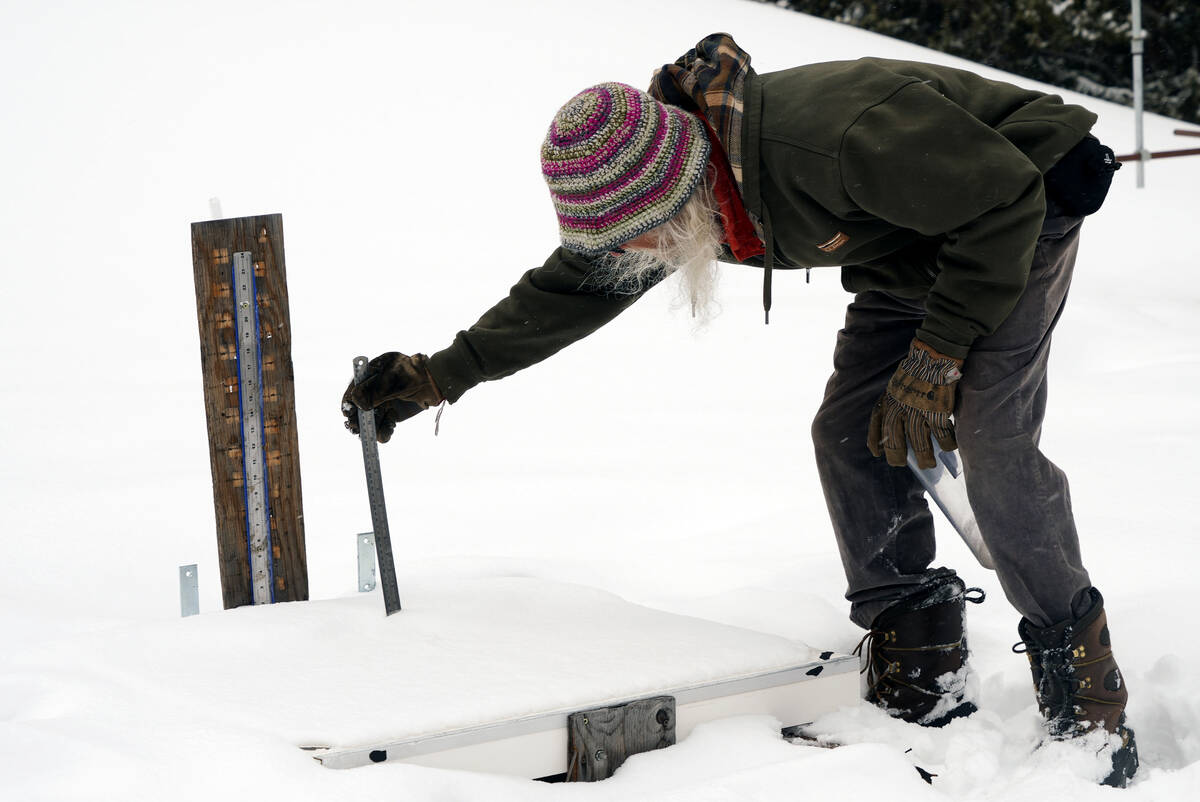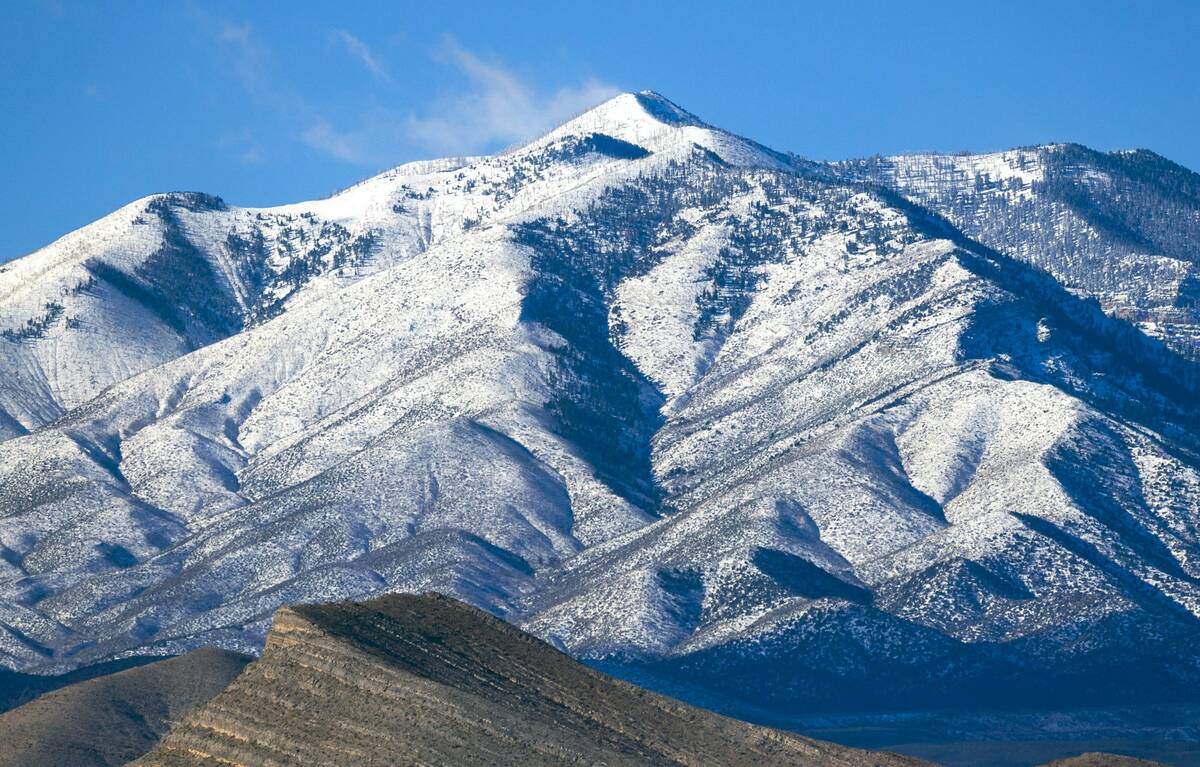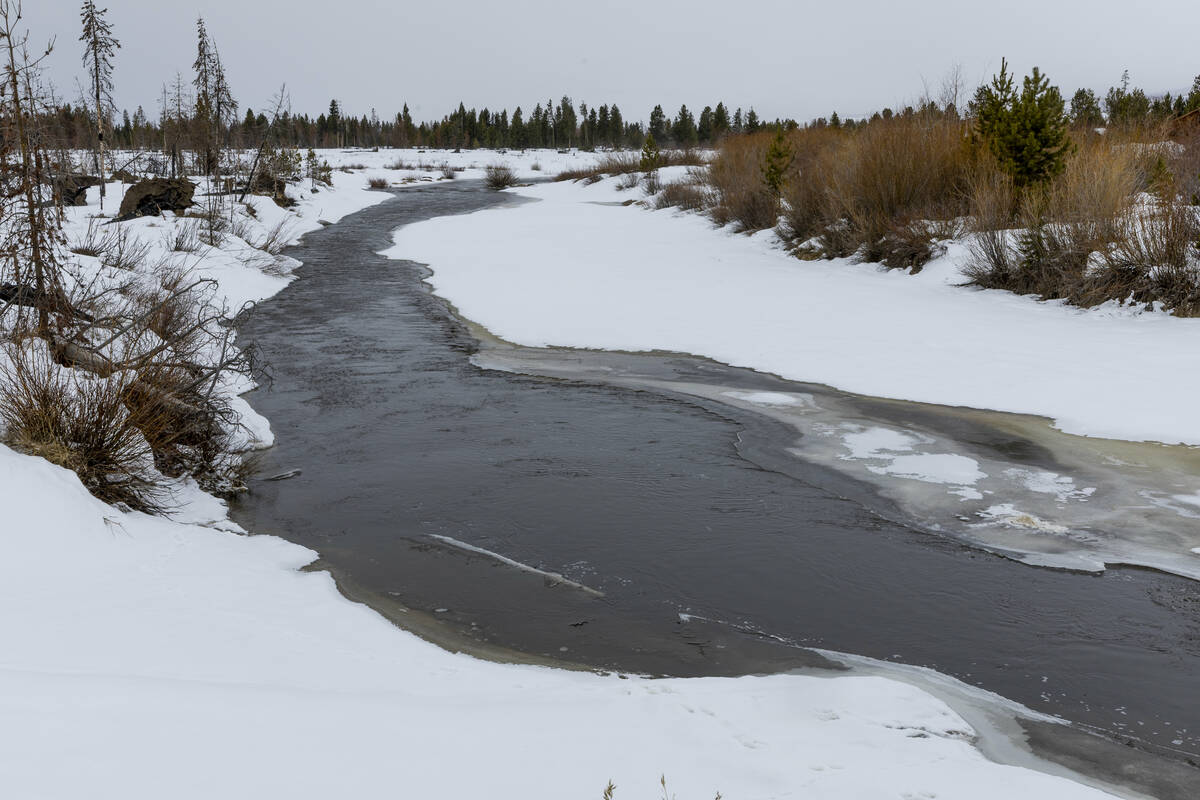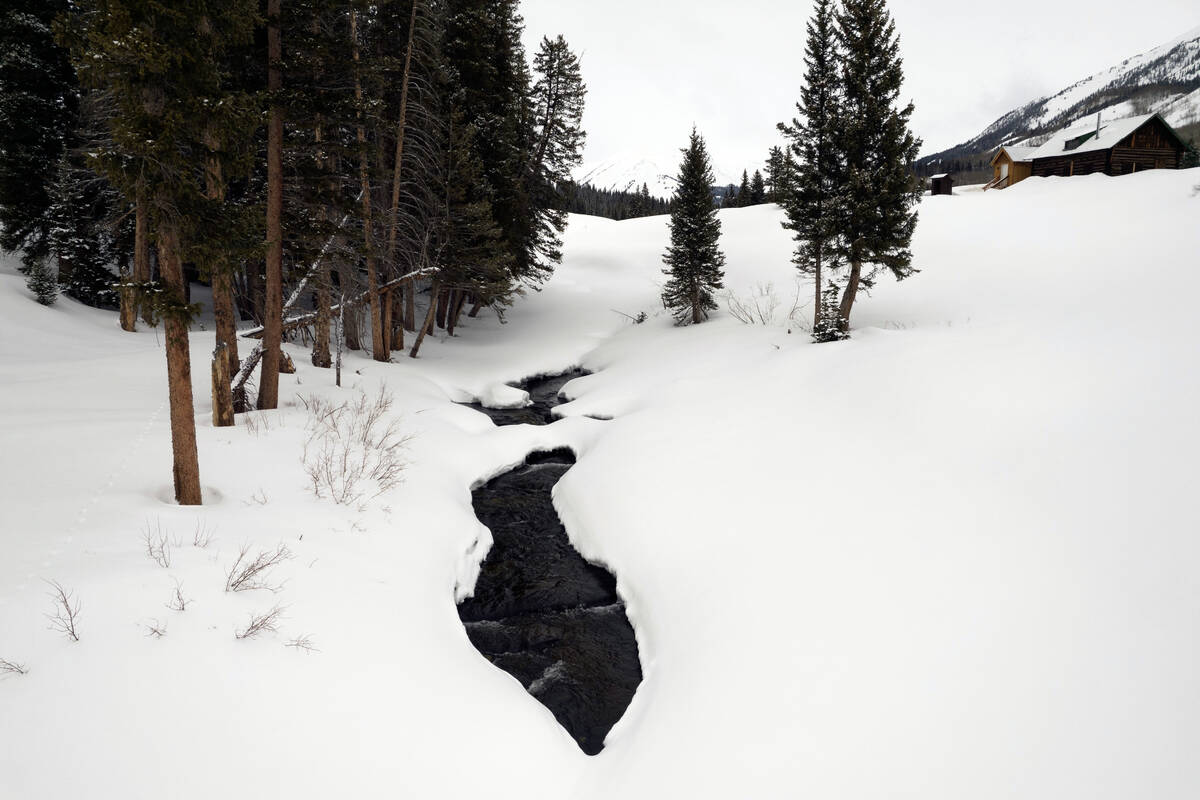Big Rockies snowpack may boost Lake Mead, Nevada in 2024
The sky has gifted Nevada another relatively wet year when it comes to snowpack in the Rocky Mountains and rural parts of the state.
Just as Las Vegas experiences its first 80-degree days of the spring, the snowpack peaks in the first few weeks of April. The Colorado River and Lake Mead rely on snowfall in the Rockies every year, and much of the state outside of Southern Nevada is dependent on groundwater, which is replenished by the snow as well.
Lake Mead’s water level was at 1,075 feet at the end of March. For the next two years, Bureau of Reclamation projections show levels hovering 9 feet above the reservoir’s 2022 record low of about 1,040 feet.
But whether this wet year will be countered with an upcoming dry one — or a series of drought-inducing years — is still unclear, said Thomas Albright, a professor at the University of Nevada, Reno and Nevada’s interim state climatologist.
“We were worried for a while in many of our basins,” Albright said. “March, in many cases, came through.”
‘Unusual’ conditions, but dryness could return
The Upper Colorado River Basin is at 112 percent of its median snowpack numbers as of Thursday, according to U.S. Department of Agriculture estimates, signaling above-normal conditions. Last year, which hydrologists largely regard as a very wet year, that number stood at 157 percent of the median — a stark contrast.
In the water world, numbers that are normal or near it are still positive, Albright said.
“Most years, you’re not close to normal,” he said. “If you’re even close to normal, that, in itself, is kind of unusual.”
That fortune was spread across all of Nevada’s basins. As of Thursday, all basins were pegged at more than 100 percent of the median, suggesting a potential boost to the state’s groundwater.
But there’s no guarantee the current snowpack rates will have a positive effect on water storage, Albright said. There are other factors at play before snow translates directly to water in Lake Mead.
Dust deposits that darken the snow’s color could speed up loss to evaporation, and so could warmer temperatures, he said. What’s to come in future winters is anyone’s guess, Albright said, but this one represents a downgrade from last year’s.
“We’re building on that with a year that, by and large, is pretty adequate,” he said. “It’s not a banner year.”
Contact Alan at ahalaly@reviewjournal.com. Follow @AlanHalaly on X.

























